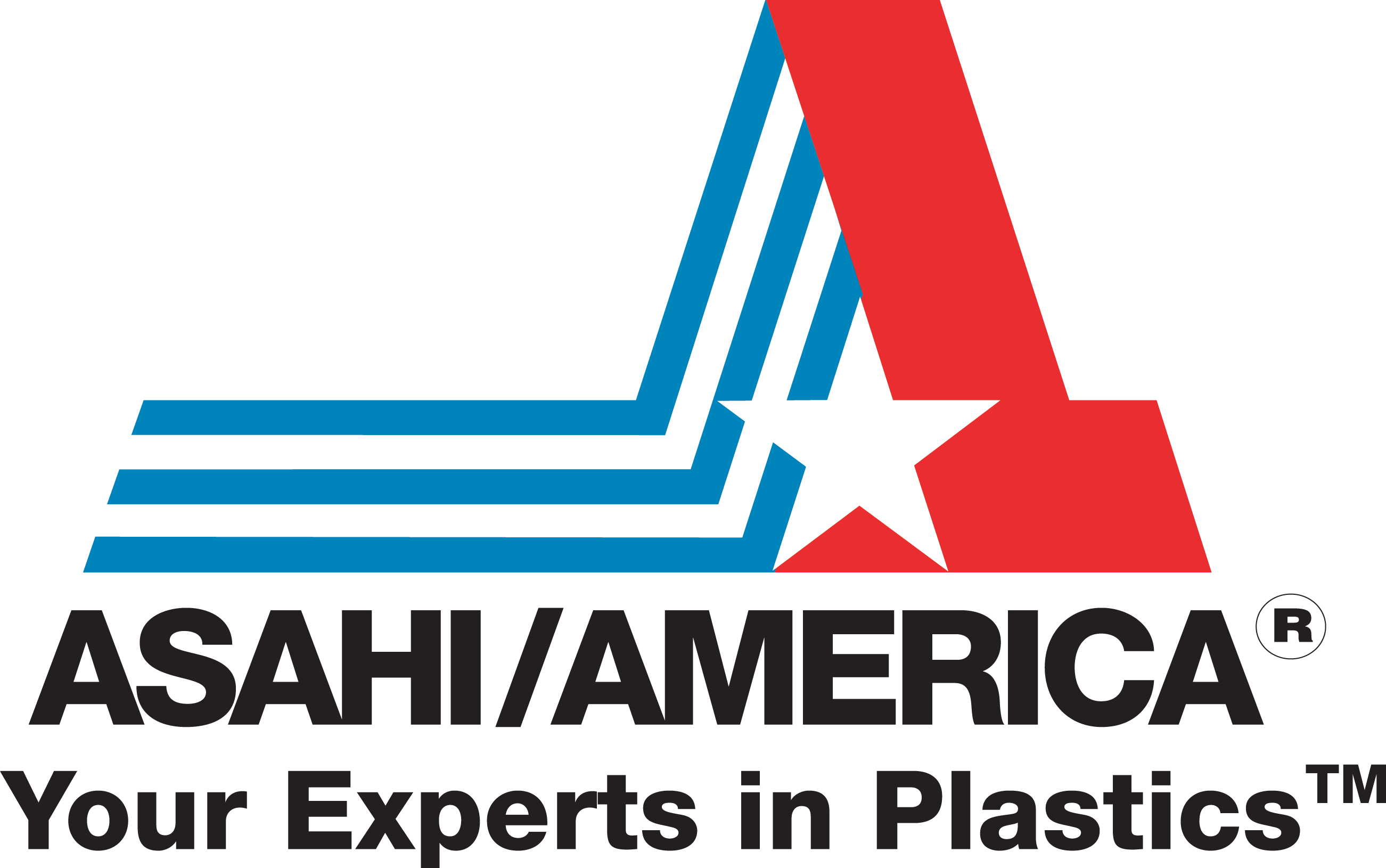November 1, 2021
Inner Circle
Why Plastics vs Metals?
There are numerous factors the design community must consider when choosing the proper material for a specific application. Some of these factors include: type of media, temperature, pressure, flow rate, environment, local codes, project cost, project schedule, and total install cost. For this article, we will focus on two thermoplastic piping systems: (1) PP-RCT and (2) specially formulated PE100, both which offer numerous advantages over traditional metallic systems like copper, steel, stainless steel, and aluminum. If a thermoplastic pipe system meets the criteria of the application, why would anyone want to use a material that is heavier, corrodes, and increases the total building cost? Hopefully this article will provide an answer to this question. First, let’s take a look at how some of the materials have been used, both in the past and present.
Let me give you a brief history of the materials used for piping. Historical data has shown that ancient Egyptians used hammered copper for piping, and the Romans used lead pipe for both hot and cold water distribution. Early North American settlers used hollowed logs, until steel – which is still the most common piping material – and copper tubes were produced. As requirements for piping changed, alternative materials with various features, advantages, and benefits were considered. These attributes included corrosion resistance, water purification, ease of installation, and environmental manufacturing concerns. Some of these alternative materials were thermoplastics. Although there are numerous applications for thermoplastic pipe and tubing, the next section will concentrate on a couple of materials used for building service piping. These applications include hot and cold water, condenser water, compressed air, vacuum, and others. These two thermoplastic piping materials offer significant long-term benefits over traditional metallic pipe systems.
Copper and steel have been dominant for nearly every type of piping; however, random copolymer polypropylene with crystalline structure for higher temperature service (Asahitec™ PP-RCT) and polyethylene designed for compressed air (Air-Pro® specially formulated PE) are becoming more common and widely accepted. So, why the hesitancy and misunderstandings about plastics? There are two main reasons: first, environmentalists abhor plastics since some take many years to degrade, thus, giving plastics a bad name; second, metallic products have been around forever and everyone is familiar with them.
Let’s tackle the first reason to start. Environmentalists are correct when they state plastics are not biodegradable, but aren’t they referring to consumables single-use plastics like water bottles, six pack rings, straws, utensils, or food and beverage containers? In the case of piping systems, wouldn’t you want something that will not degrade and breakdown over time? Or be detrimental to the environment when mined or manufactured? And the second reason: metallic products have been around long before plastics, but are they necessarily the right product for the application? Why are energy companies replacing rusted out steel gas lines with thermoplastic piping? Why are some metallic manufacturers constantly downplaying the benefits of plastics? Time will tell, but until then, let’s take a look at a couple of applications where thermoplastics are becoming more accepted by owners, architects, engineers and contractors.
I think we know what compressed air is, since we have all, at one time or another, had to inflate our vehicle tires when they get low on pressure. The Achilles’ heel of every compressed air system is moisture, which causes corrosion in the metallic pipe system, and ultimately, failures. Air dryers are incorporated in the pipe system, but residual moisture is still present. Will moisture cause internal corrosion, or in the case of a direct buried system, external corrosion to a thermoplastic system like Air-Pro®? Absolutely not.
What is hydronic heating and cooling? Hydronic systems circulate liquid water through pipes to provide heating and cooling to the building zones. Hydronic systems consist of an energy source (a boiler, water heater, or chiller), along with the associated pumps and piping that connect the source to suitable terminal heat-transfer units located in the spaces. Metallics are mostly used for these applications; however, PP-RCT can provide numerous advantages over steel, which we will cover below.
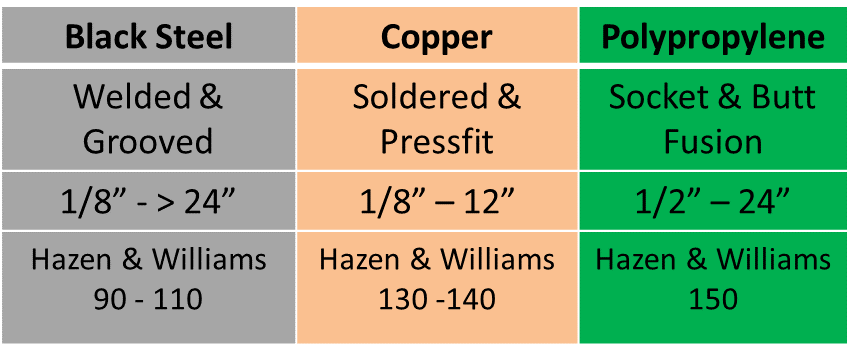
Number one: corrosion. This may be the single biggest factor as to why thermoplastic pipe systems are considered over metallics. According to the 2012 Buried No Longer (BNL) report by the American Water Works Association (AWWA), more than $1 trillion dollars needs to be spent in the next 25 years to repair or replace the nation’s aging water distribution system. Chemical treatment is often implemented to retard corrosion of steel pipe; however, this treatment can often have detrimental effects to the pipe system itself. As internal corrosion continues, the pressure drops increase, and flow rates decrease. Over time, you will experience less pressure at the point of use. The Hazen–Williams (H&W) equation is an empirical relationship which relates the flow of water in a pipe with the physical properties of the pipe and the pressure drop caused by friction. It is used in the design of water pipe systems. The higher H&W number reflects less friction and better flow characteristics, and the lower H&W number reflects more friction and reduced flow characteristics. Figure 1 compares the H&W numbers of steel, copper and polypropylene. One thing to remember: the steel and copper factors are based on brand new material and will decrease over time as internal corrosion builds; whereas, polypropylene will not corrode or scale, thus, the H&W number will always stay the same. For example: if new steel (per Figure 1) has a H&W factor between 90 – 110, what is the H&W factor of a steel pipe per Figure 2? 60? 20? Who knows. This is one reason why metallic pipe systems are often oversized – to compensate for internal corrosion. Many of these water distribution systems are turning to thermoplastics, since they will not be attacked by internal or external corrosion.
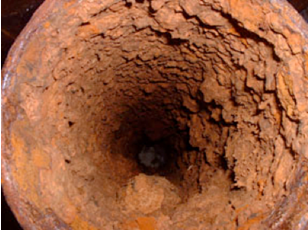
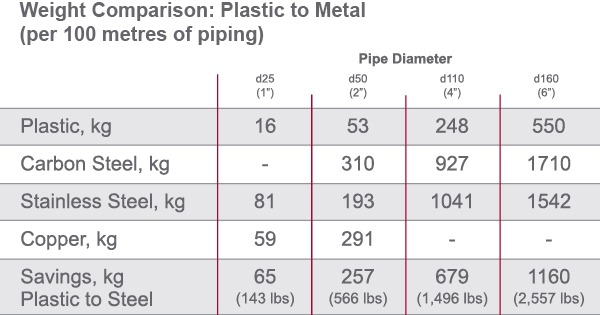
Number two: weight. Similar profiles of metal can be up to seven times heavier than plastic. Lightweight equates to less transportation, handling, storage, and pre-assembly costs. Figure 3 is an example of weight differences between plastics and metals.
Number three: safe welds. Unlike welding steel or soldering copper, welding thermoplastic materials does not require an open flame. Many projects require a burn permit for any open flames, which is not required for the three primary methods of heat fusing thermoplastic piping systems: socket fusion, butt fusion, and electrofusion. In addition, the welding times for these three joining techniques can be substantially less than welding or soldering procedures. There are mechanical joining techniques for metallic systems, but mechanical joints are normally not used in concealed areas due to lack of accessibility.
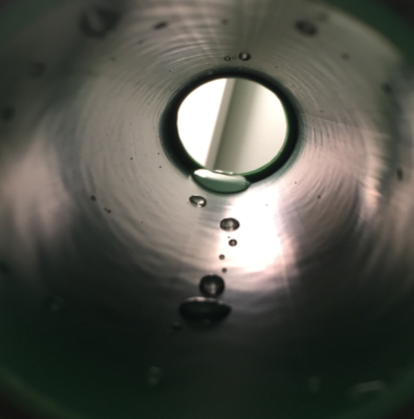
Number four: energy efficiency. Since thermoplastics will not form internal corrosion, the pipe system will operate with the same efficiency over time. This is not the case with metallics, as internal corrosion must be considered when sizing the pipe system. In addition, metallics are hydrophilic, which means they have a high energy surface; whereas, thermoplastics are hydrophobic, with a low energy surface. Imagine your car after waxing the surface, where the water beads up and rolls off. This reduces friction loss and pressure drops. Figure 4 is a good example of this. Due to these factors, designers may need to upsize the pipe, fittings, pumps, and valves, which also upsizes the facilities energy costs.
Number five: maintenance costs. Again, this is related to corrosion issues. Depending on piping parameters, chilled water systems can corrode at a rate of 1 – 3% per year; therefore, a life expectancy could be as low as 33.3 years. Temperature and pressure are key factors when trying to determine service life. Thermoplastic systems have published life expectancies based on a system’s temperature and pressure, but do metallics? How do you compensate for the degradation of metallic pipes, such as erosion, galvanic corrosion, and pitting? Thermoplastic systems can offer significantly higher life expectancies since, once again, corrosion of any type is not an issue. Most building owners are striving for longer service life, and cost effective materials like Asahitec™ PP-RCT and Air-Pro® specially formulated PE are often the answer to their needs.

Number six: insulation. Thermoplastics have a greater resistance to heat transfer than metallics. Their heat transfer coefficients (K factors) are much lower than steel and copper. Plastics would always require less insulation than metal pipes. In some instances, however, insulation thicknesses are dictated by local codes (ASHRAE, OSHA, etc.) and the AHJ. Thermal conductivity (k-value) is the ability of a material to conduct heat; hence, the lower the k-value, the better the material is for insulation. Figure 5 shows K values of different thermoplastics, copper, and steel.
As you can see, there are numerous advantages of thermoplastics versus metallics. As previously discussed, metallics are still the predominant materials used for certain building services’ piping; however, thermoplastics, such as Asahitec™ PP-RCT and Air-Pro® specially formulated PE, have numerous advantages and can provide substantial cost savings for building renovation or construction. For almost 50 years, Asahi/America has lived up to our motto, Your Experts in Plastics, and been at the forefront of thermoplastic pipe, valve and actuation, fittings, and fusion tools, manufacturing, and development. Give us a call and we will be glad to share our expertise with you!
EDITOR’S NOTICE: Please note, the information in this article is for educational purposes only and does not supersede any Asahi/America technical information or product specifications. Please consult Asahi/America’s technical department at 1-800-343-3618 or pipe@asahi-america.com on all product applications in regards to material selection based on the pressure, temperature, environmental factors, chemical, media, application, and more.
